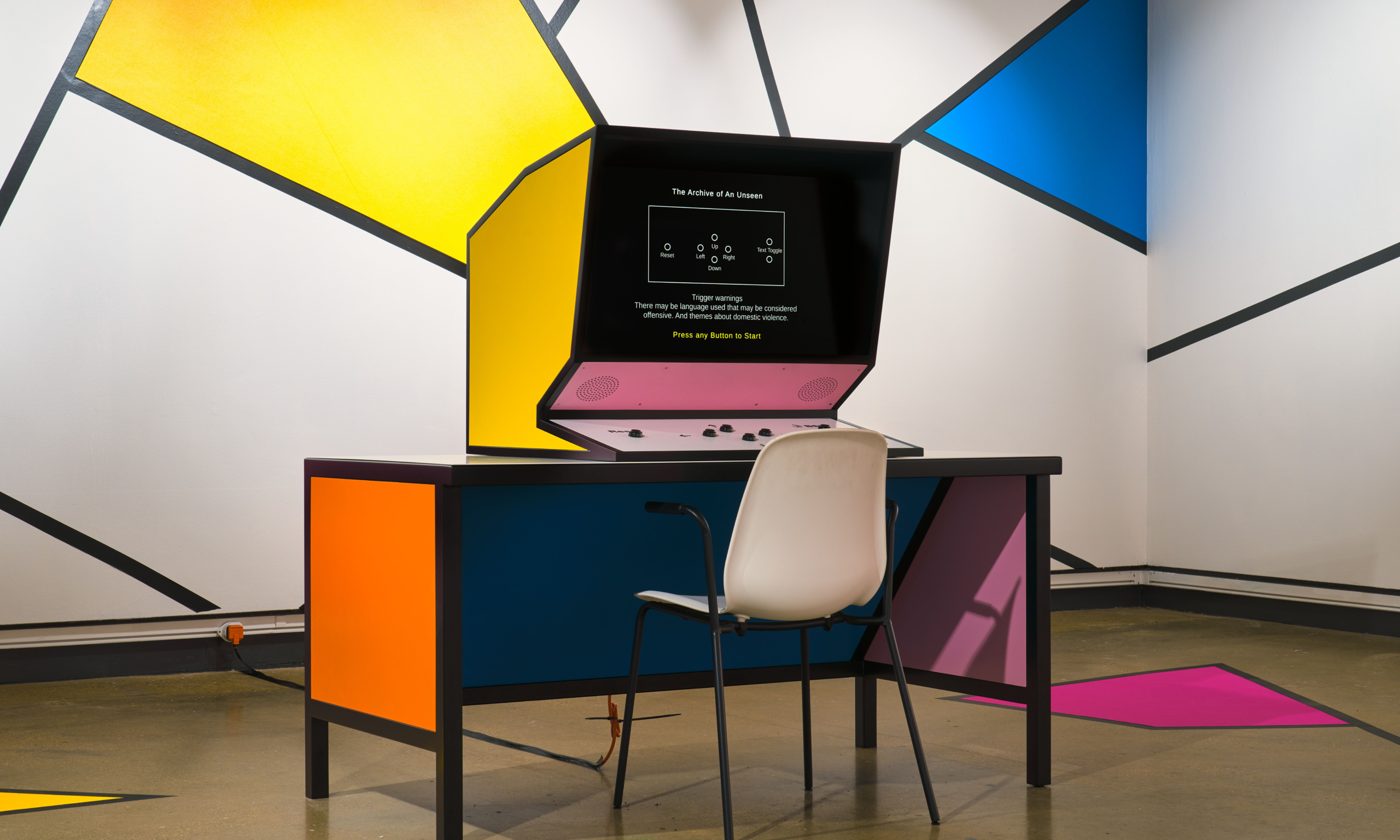Christopher Samuel's work centres on redefining his own narrative and exploring the representation of disabled people in archival materials
Christopher Samuel, The Archive of an Unseen, 2022. Custom-built Microform Reader. Photo by Reece Straw. The Archive of an Unseen is commissioned and supported by Wellcome Collection and by Unlimited, celebrating the work of disabled artists, with funding from Arts Council England
A new exhibition opening today at Middlesbrough Institute of Modern Art (MIMA) brings together contemporary works by 15 disabled, neurodiverse and D/deaf artists, in what curators describe as the first survey of its kind at a significant public gallery.
Addressing issues of representation and care, Towards New Worlds features work spanning the “visual arts”, while bringing into question the very definitition of the term. Sounds, smells and textures are carefully integrated throughout a distinctly calming space, pushing the boundaries of the traditional gallery experience.
Multidisciplinary artist and disability activist Jenni Juulia Wallinheimo-Heimonen, whose work can currently be seen in the Finnish pavilion at the Venice Biennale, presents a darkly satirical film exploring the devaluing of care workers, and the dehumanisation of those they tend to. Reflector of Living Will, which stars a crudely built yet emotionally intelligent robot in the role of a carer, explores the patronising attitudes often endured by those living with disabilities.
Christopher Samuel, meanwhile, whose practice as an artist and curator is rooted in identity and disability politics, offers an interactive narration of his own experiences as a Black, disabled, working-class person growing up in 1980s Britain. Conveyed via a brightly coloured microform reader, The Archive of an Unseen provides freedom from the medical gaze that followed the artist through his youth by allowing him to tell his own story with autonomy.
“Each of the artists in this exhibition could take their rightful place in a traditional, mainstream white cube gallery,” says the exhibition’s curator, Aidan Moesby. “But as a group our work often isn’t valued in the same way.
“I know that when I show in different contexts—of being either an artist and curator or a disabled artist and curator—it's looked upon very differently. So to have a mainstream institution profiling and foregrounding work by these artists is groundbreaking.”
Moseby originally joined MIMA as part of the Future Curator’s scheme, which supports the development of disabled curators. He describes his ongoing collaboration with the institution as a part of its commitment to meaningful change, and to representation that goes beyond box ticking.
Such an approach is surely to be welcomed. Despite making up 23% of the UK’s working-age population, disabled people remain chronically underrepresented across the arts. In 2023, a report commissioned by the British Council found that 48% of European arts organisations surveyed presented work by disabled artists less than once a year, while 23% never did so.
Towards New Worlds addresses this disparity in numbers, but also in the way the work of disabled and neurodiverse artists is sometimes approached. While lived experience is central to many of the exhibits in Middlesborough, the show’s artists often rile against traditionally siloed views of their work—challenging viewers to engage with and learn from their stories but to judge them solely on the quality of what they create.
For Joanne Coates, a barn on the farm where she works is a space to safely 'unleash' her emotions
Laborious – 2024 – Joanne Coates
For photographer Joanne Coates this was an intimidating concept. While she found power in addressing her dual diagnosis of ADHD and autism within her practice for the first time, she remains concerned about what impact this choice could have on her career. “I’ve noticed, increasingly, a negative approach to disability or neurodivergence that I don't think there was quite as heavily growing up,” she says.
Coates, who has just completed her time as the UK’s 2024 general election artist, drew on her combined experiences of autism and life as farm worker to produce her contribution to Towards New Worlds. Staged in a barn, Laborious shows the artist engaged in repetitive, difficult movements, through which she highlights the importance of safe spaces in exploring her own neurodivergence.
“It actually does help me regulate in some way,” she says of making the work. “And it made me think of the care we give to the animals on the farm, and how we don’t always give that to humans.”

